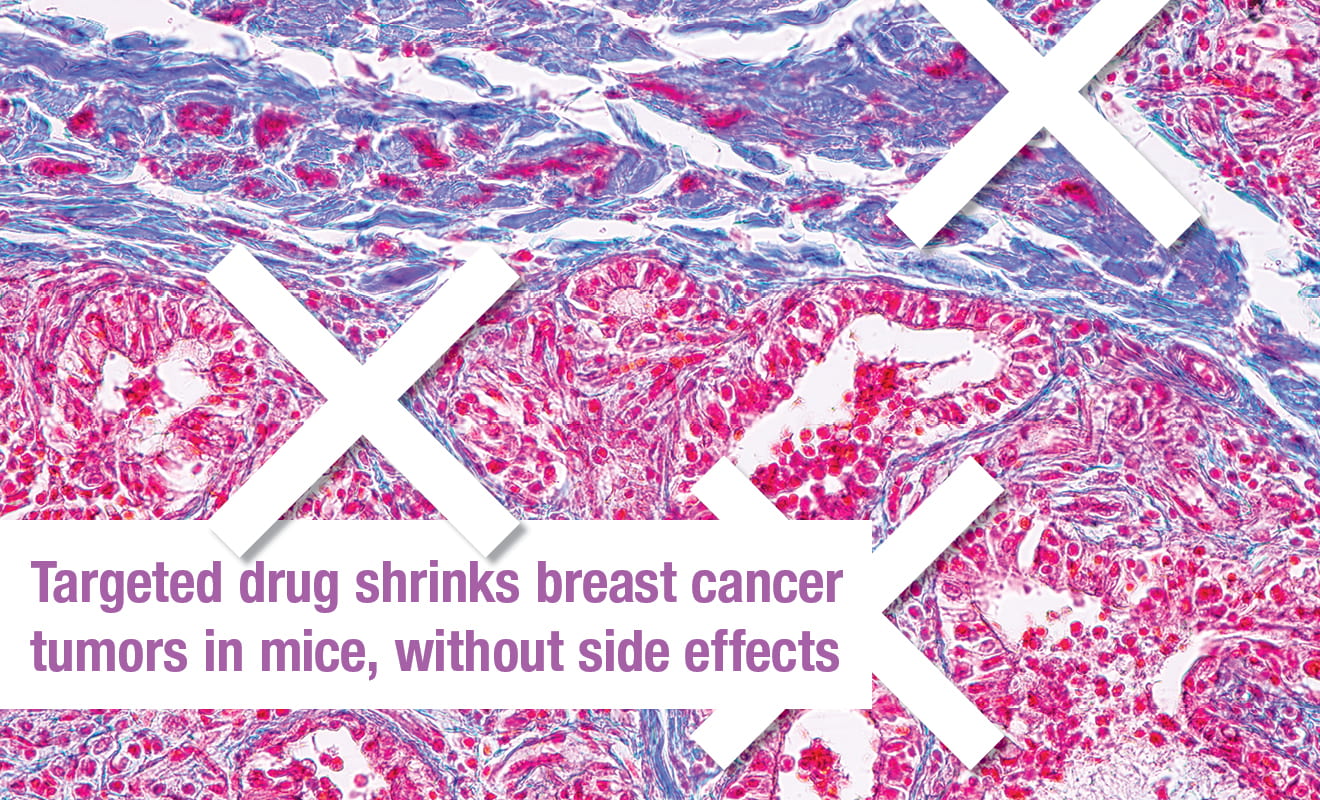Fighting Cancer at the Source
Targeted drug shrinks breast cancer tumors in mice, without side effects
To fight cancer, it helps to go right to the source.
That’s exactly what Provost Wole Soboyejo and a team of researchers are doing as they seek targeted drugs that aim to tackle hard-to-treat breast cancer cells.
The researchers reported in an article published by Scientific Reports that they had identified targeted drugs that reduced the size of “triple-negative” breast cancer tumors in mice, without toxic side effects.
The drugs used luteinizing hormone-releasing hormone, or LHRH, to deliver chemotherapeutic agents—the drug Paclitaxel and the natural substance prodigiosin—directly to breast cancer cells.
“When injected into the bloodstream, only a small fraction of traditional chemotherapeutic drugs reaches tumors,” Soboyejo said. “It usually takes relatively high concentrations of conventional cancer drugs to have therapeutic effects on tumors. Hence, such concentrations are often toxic to other cells. In our case, the targeting drugs were more effective at shrinking and eliminating triple-negative breast tumors in mice.”
WPI co-authors are John Obayemi, assistant research professor of mechanical engineering; Ali Salifu, assistant research professor of mechanical engineering; Vanessa Uzonwanne, doctoral student in materials science and engineering; and Jean King, dean of arts and sciences. Other co-authors are from the University of Massachusetts Medical School, Nnamdi Azikiwe University, and the African University of Science and Technology.
The key to targeted therapy is a cellular structure known as a receptor. Triple-negative breast cancer cells are harder to target because they lack receptors commonly over-expressed on other breast cancer cells for the growth factor HER2 and the hormones estrogen and progesterone.
About 10% to 17% of all breast cancers are triple-negative. Such tumors are more prevalent in younger women, African American women, and African women.
Inspired by a relative’s battle with breast cancer, Soboyejo previously studied LHRH as a targeting mechanism to deliver magnetic imaging nanoparticles to breast tumors in mice. More recently, he began studying LHRH as a targeting mechanism for chemotherapeutic drugs. His work has been funded by WPI and the World Bank.
His team hopes to continue work on LHRH-targeted nanoparticles and therapeutic drugs and to identify other targeted drugs and nanoparticles for the detection and treatment of other tumors.
“The fact that we could target triple-negative breast cancer in mice models is important,” Soboyejo says. “However, I think this method has major implications for targeted cancer treatment in general.”



